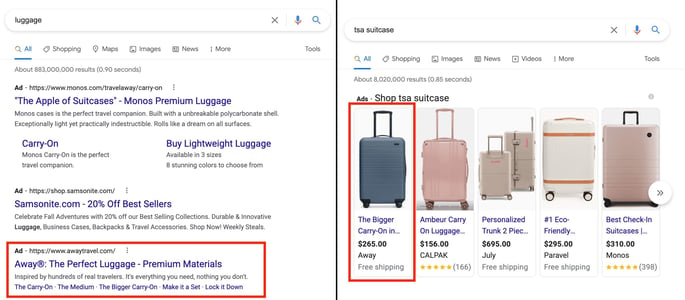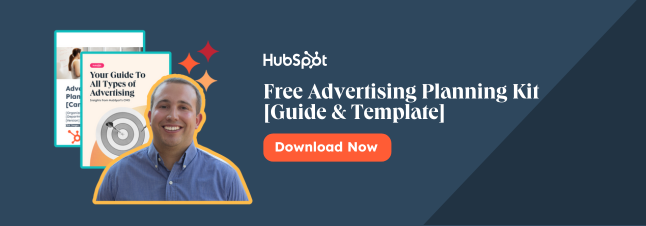Have you ever visited a website, looked at a product, left the site, but then seen an ad for that exact same product you were looking for on Google? I come across ads like this multiple times per week.

The reason we see these ads is because we’re placed on remarketing lists — we’ve shown interest in a product and a business wants to remind us that it’s still available for purchase if we’re interested.
As a business, using remarketing lists helps you make contact with pre-qualified prospects in an attempt to drive a conversion. In this post, we’ll explain how, as a business, you can leverage remarketing lists for search ads to draw in interested site visitors for conversion, and best-practices for using these lists.
What is RLSA?
Remarketing Lists for Search Ads (RLSA) is a Google Ad feature that helps you reach members of your audience that have previously visited your site and serve them targeted ads in queries for related keywords on Google or other Google Display Network sites.
RLSA Audiences
RLSA audiences are created by adding a snippet of code (called a tag) to your website that automatically adds your audiences to specific lists based on the action taken on your site. Once the tags are placed, you can bid on these segments and add them to your marketing campaigns. Here’s a guide from Google on how to set these up.
Creating specific RLSA audiences helps marketers leverage the already interested highly-valuable audience members, as it may not be as difficult for them to convert. As a result, you’ll increase conversions, revenue, and profits. You’ll also make the most of your budgets because these users are more qualified, so you’ll spend less on brand awareness.
If you’re feeling a bit confused, consider this example: you sell fiberglass pools and a user on your site has started a work order for pool maintenance, but then they bounce. Since they came so close to conversion, you can add them to a remarketing list and serve them ads for your business every time they query “fiberglass pools,” or related keywords.
Let’s go over some best practices for using RLSA campaigns in your marketing.
RLSA Campaign Best Practices
1. Know your audience before beginning.
As with any marketing process, it’s critical to understand your audience before creating your RLSA lists and running your ads. Consider creating buyer personas and customer journey maps to learn what customers are thinking about in different stages of your journey for better targeted ads.
An additional step could be to modify your bids based on audience demographics. If your users are signed in to Google when making their searches, you’ll be able to further segment and adjust your bids and lists based on available information, like age and gender.
2. Change bids by user stage.
If you’ve created accurate journey maps, you likely know which customer actions are most critical to driving conversions for your audience — this is where you should use RLSA. Use your website codes to track where your users are in their journey, and bid higher for those closer to conversion, a.k.a the closer they are to completing a purchase.
3. Match messaging to user action.
Ensure that the messaging in your RLSA ads matches the action you want the user to take or the action they have already taken that got them placed on your list.
For example, if a visitor landed on a pricing page, you can share an ad with them that calls attention to an upcoming discount.
To do this, you can create specific tags within your Google Ads account that note which action a user took and modify your bids to show relevant copy based on the action taken.
4. Upsell to converted users with related products and services.
You may not think to use RLSA on converted users, but it’s a worthwhile strategy if you sell products or services that enhance experiences if used together.
For example, if you sell cameras, you won’t advertise camera equipment to users that haven’t checked out on your site. Once a user has made a purchase, though, and you have a unique list for those that have taken that action, you can serve them ads for camera equipment in an attempt to upsell.
With this tip, it’s important to note that not all converted users are worth retargeting with RLSA. For example, suppose you have a user that is currently in negotiation with a sales rep. In that case, it could be a waste of money to retarget them because they may be ready to convert after conversations with your team.
5. Bid for broad terms.
While it’s important to bid for terms directly related to your business, it’s also worthwhile to bid for broad search terms related to your business that your audiences may search for as well. For example, if you sell SaaS, your audiences may be searching for your competitors before deciding, so you can bid on competitor brand names.
If you choose to go this route, ensure that you’re not spending all of your money on broader terms, as your business-related keywords are the most relevant.
RLSA Campaign Example
A few weeks ago I was working with my friend's mom to surprise him with a birthday present. He likes to travel, so we decided that a TSA-approved suitcase was the way to go. I spent a lot of time doing research on different sites and visiting multiple pricing pages.
I placed a product from a brand called Away in my cart, but we ended up purchasing from a different company. Away likely tracked how close I got to conversion and added me to an RLSA list. Now I see this a paid targeted ad from Away in search results for the words “luggage” and “TSA suitcase,” as shown in the image below.

Over To You
The users that you choose to place in your remarketing lists should help you drive conversions.
Take the time to create detailed customer journey maps to know critical points of conversions and create corresponding lists. As a result, you’ll likely find your RLSA campaigns drawing in leads and increasing business revenue.


![9 Advertising Trends to Watch in 2024 [New Data + Expert Insights]](https://blog.hubspot.com/hubfs/advertising%20trend.png)




![How to Make an Ad: A 15-Step Guide [+Expert Tips]](https://blog.hubspot.com/hubfs/how%20to%20make%20an%20ad.png)

![How Consumers Responded to Black Friday in 2022 [+ Holiday Marketing Tips]](https://blog.hubspot.com/hubfs/black-friday-ads_0.webp)
![What is Comparative Advertising? [+ Examples]](https://blog.hubspot.com/hubfs/Untitled%20design-Aug-17-2022-02-39-51-39-PM.png)
![How to Prepare an Advertising Plan [Free Template]](https://blog.hubspot.com/hubfs/advertising%20plan%20example.jpg)